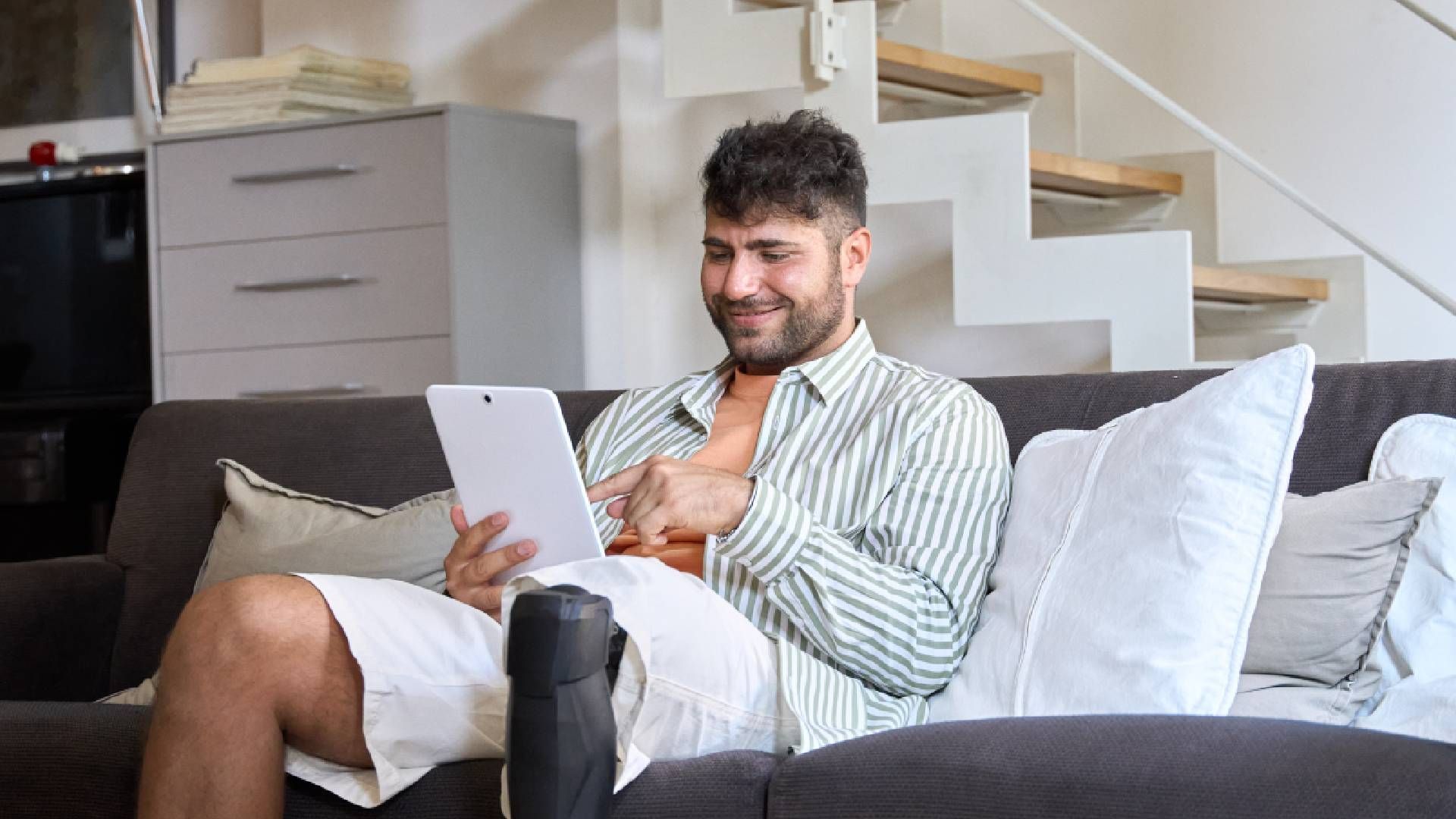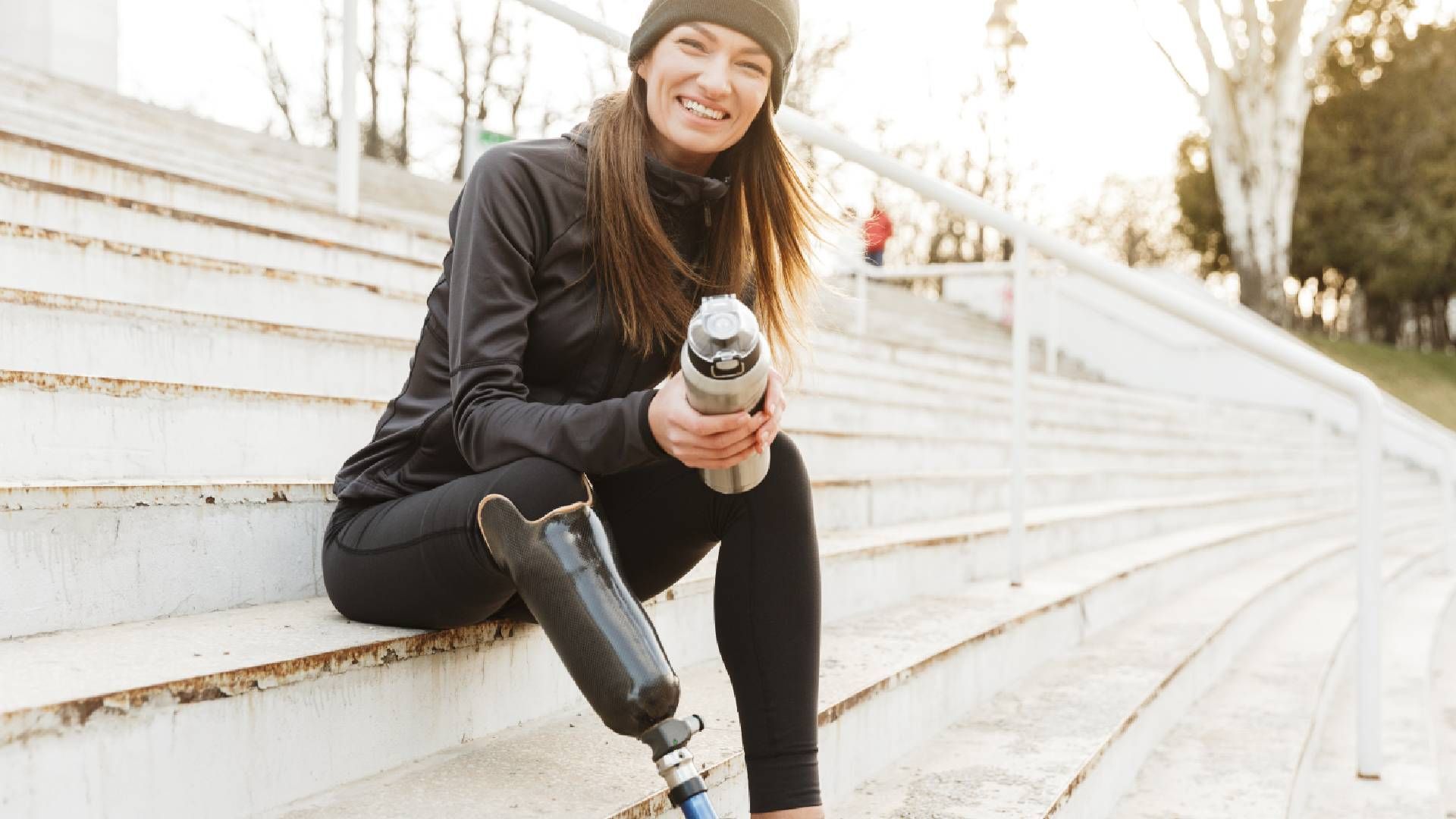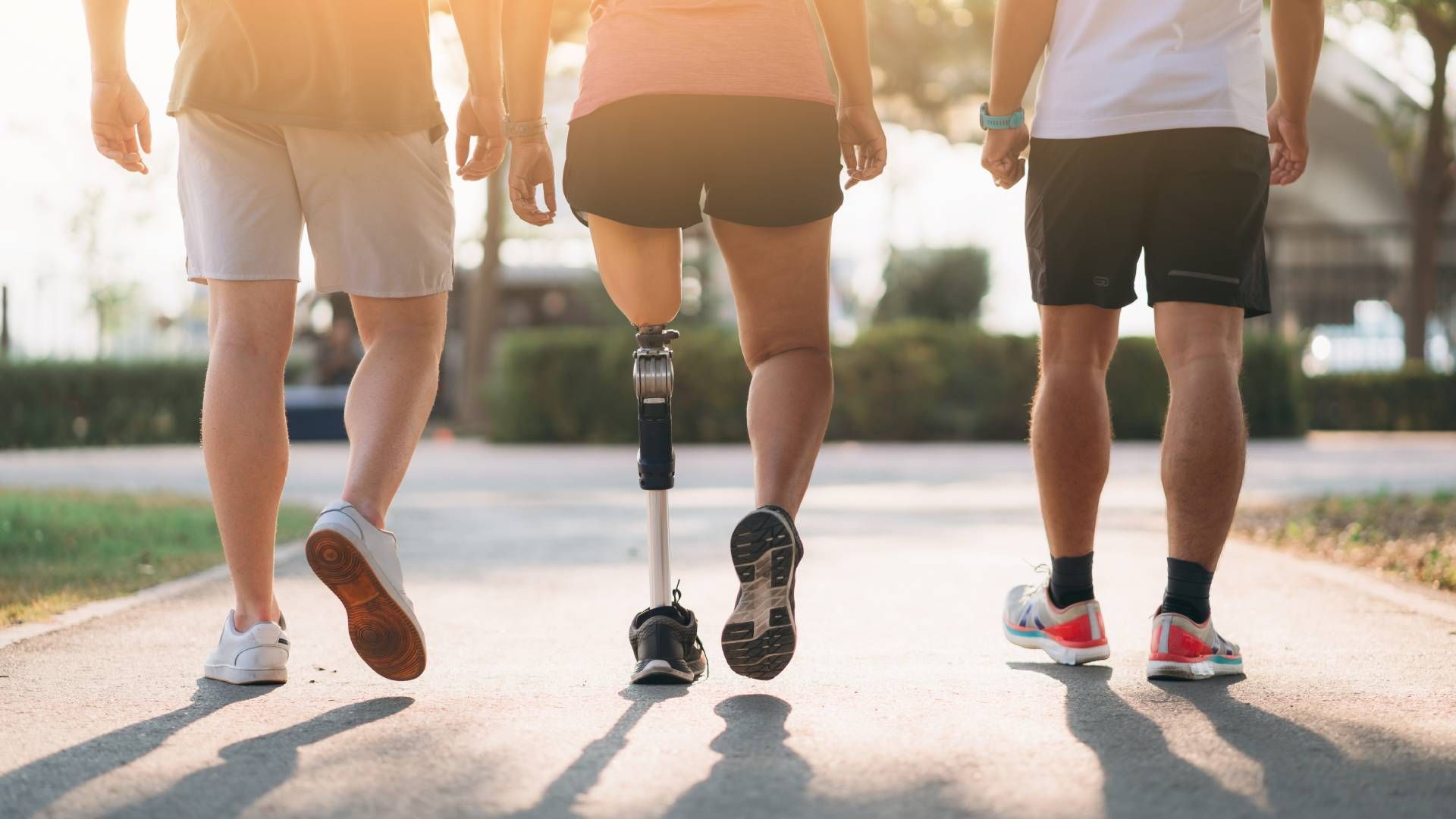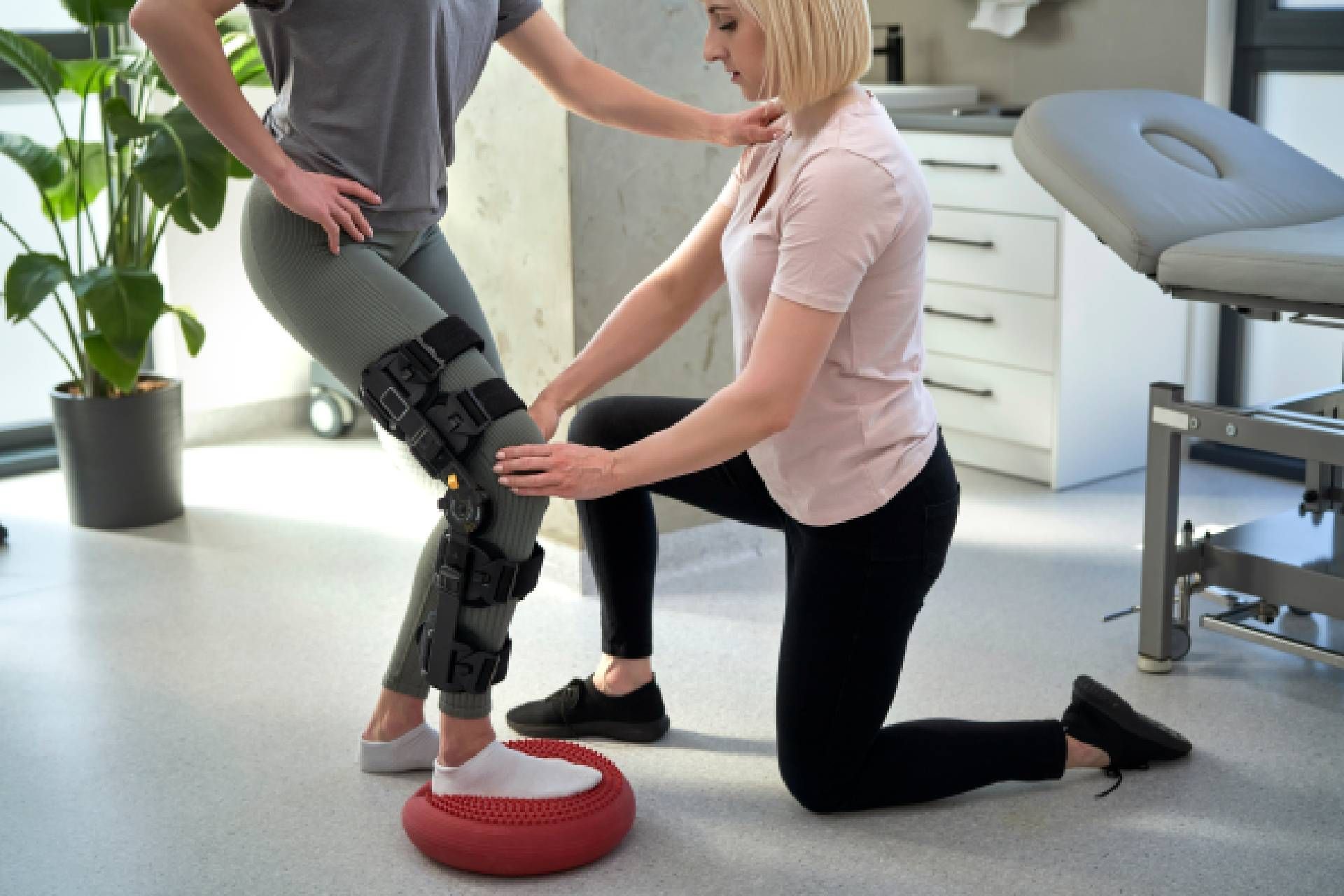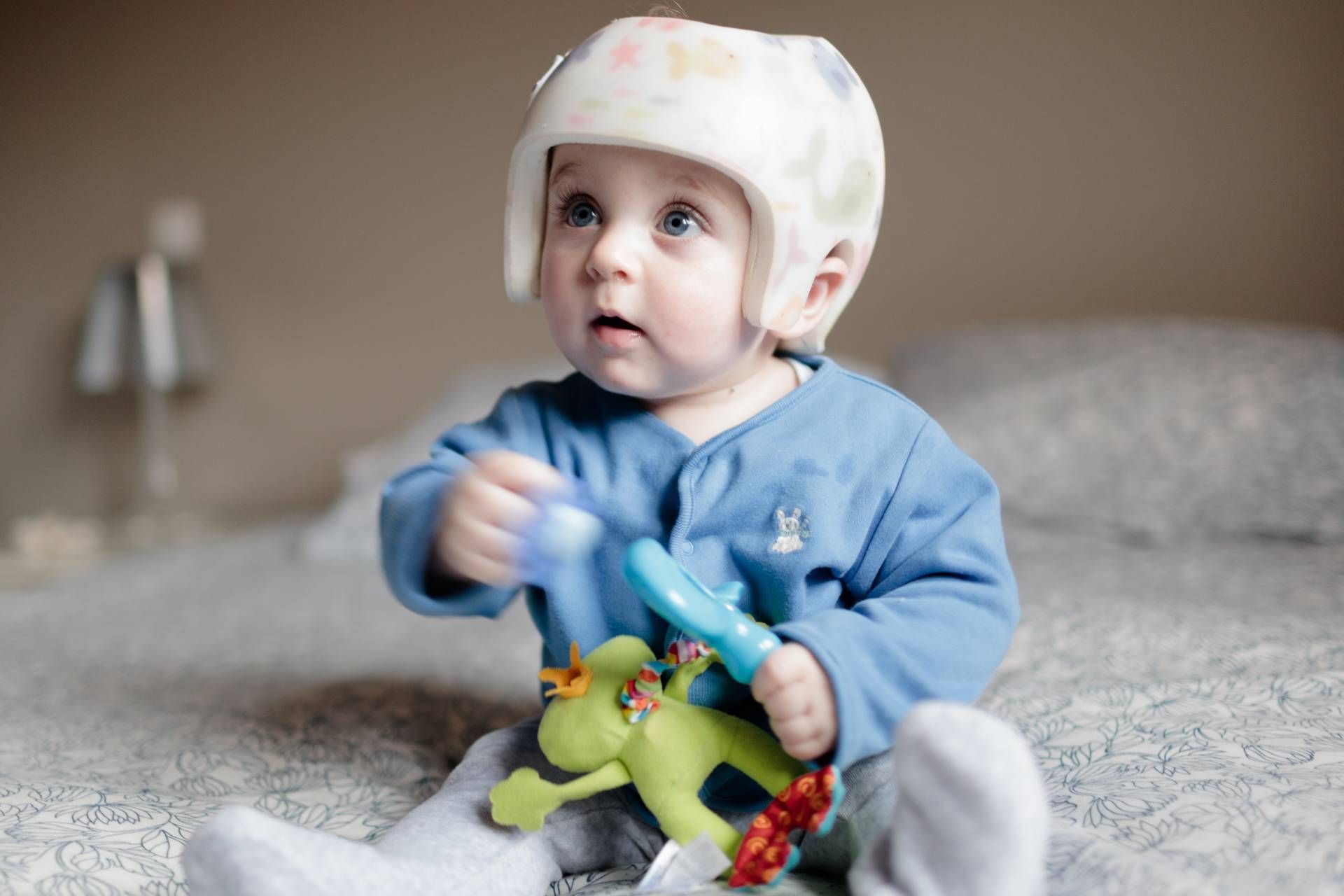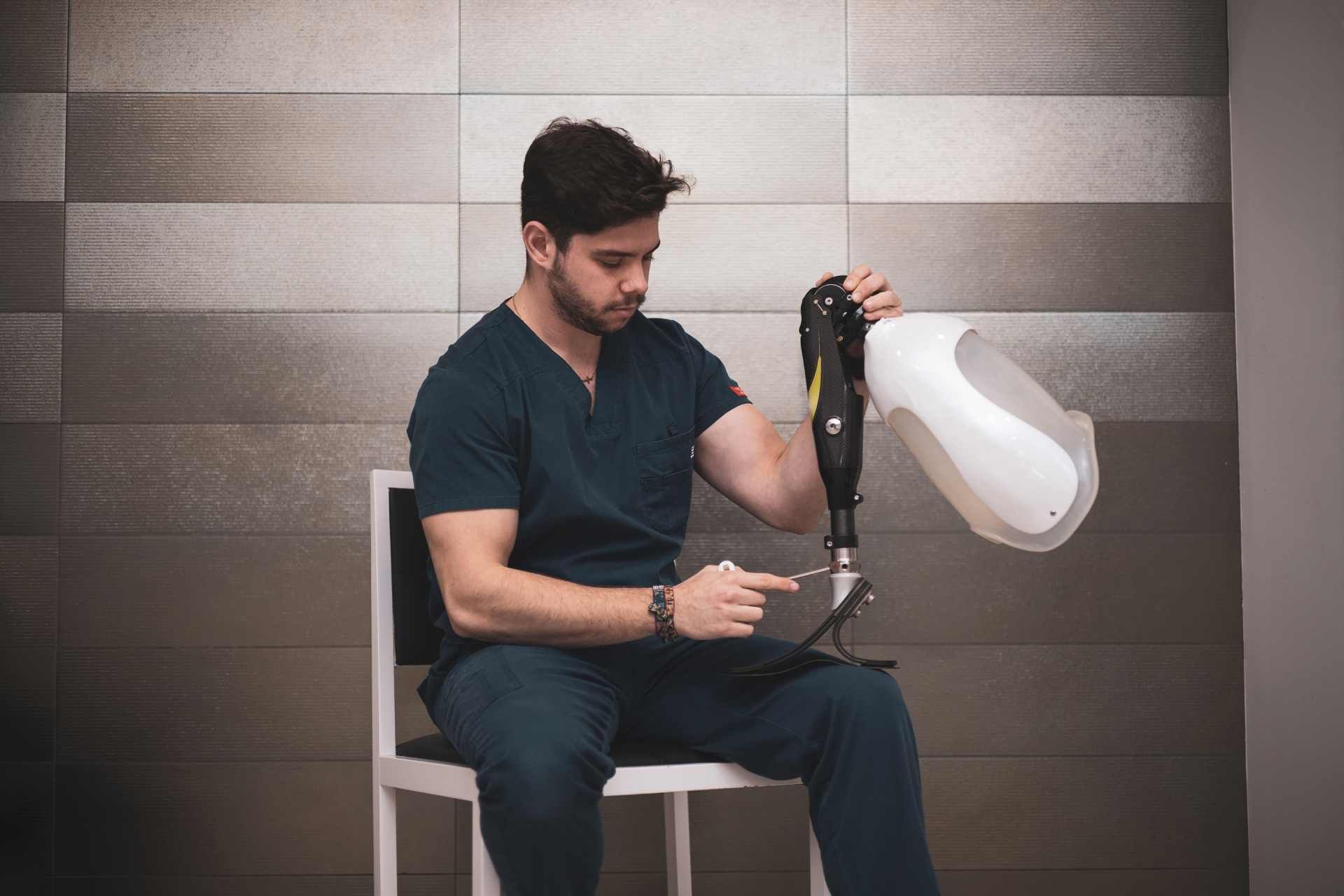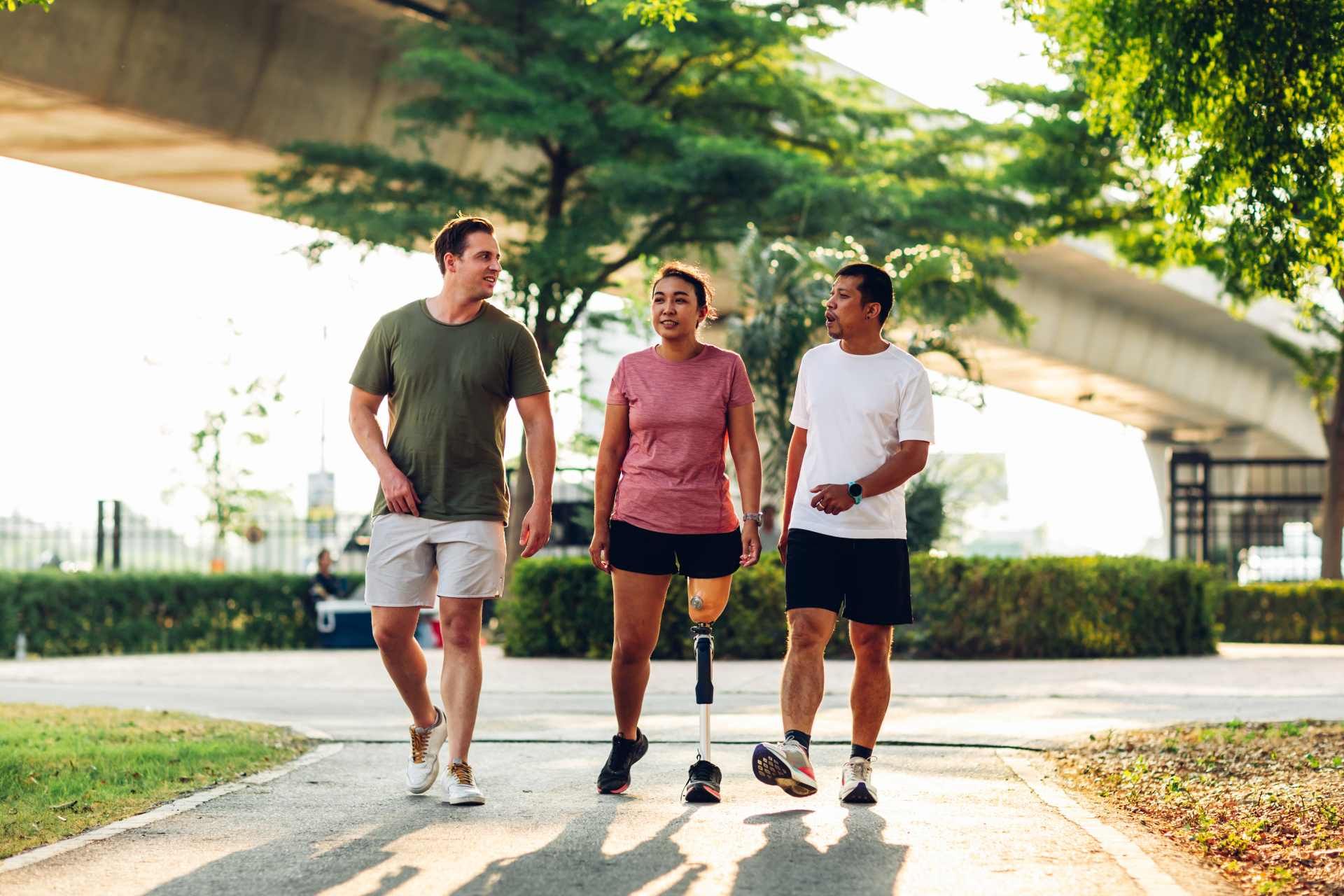While the process of getting a below the knee prosthesis can be a big change, it doesn’t need to overwhelm you. Our team at Kenney Orthopedics offers support for those seeking prosthetic care, starting with this breakdown of what you need to know about below the knee prosthetics, including care tips and links to patient resources.
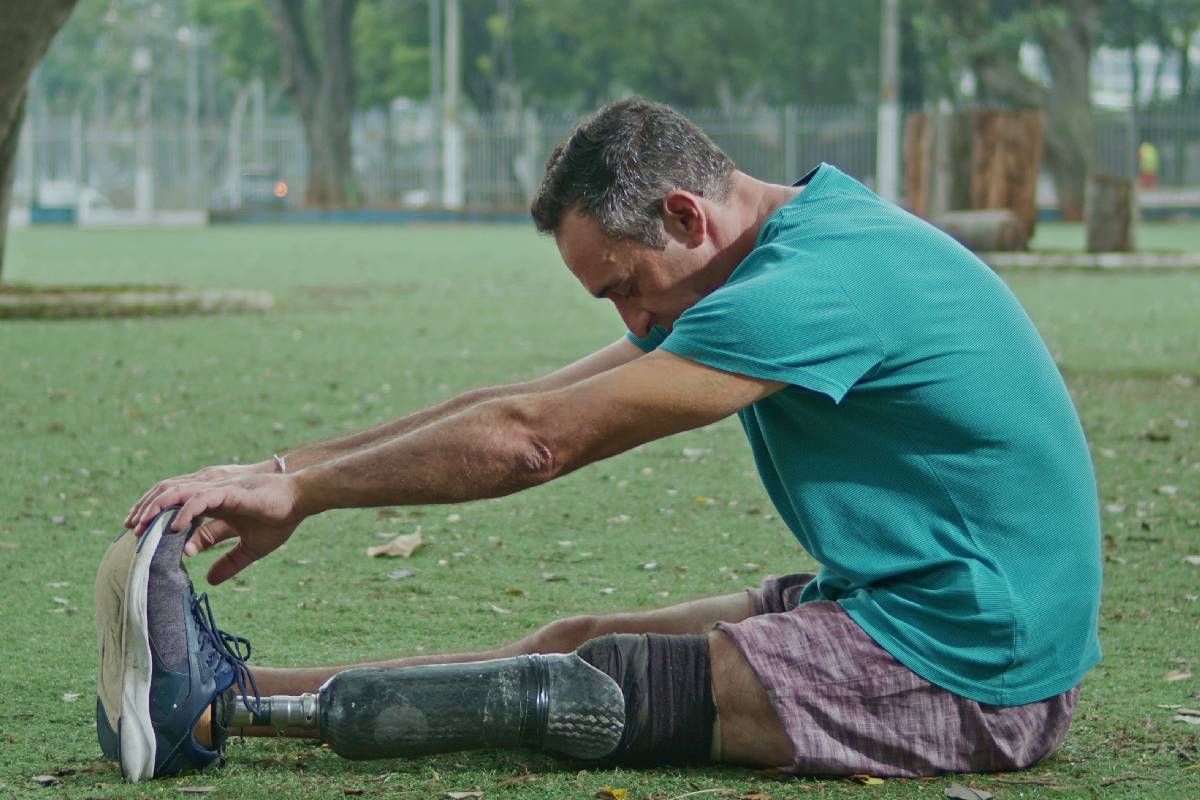
Parts of a Below the Knee Prosthetic Device
As you start to look at the different designs for below the knee prostheses, it can be helpful to understand the terminology for describing basic parts of the device.
Starting at the top of a below the knee prosthetic device and working down:
- Suspension: The mechanism that secures the prosthesis to your body. Different types of suspension sleeves or belts are used with different styles of below the knee prosthetics and in accordance with what fits best on the residual limb.
- Socket: The part of the device that cradles the residual limb.
- Pylon: This component of a below the knee prosthesis loosely mimics the functionality of your lower leg bone, providing structural support. It may be exposed to appear as a metal tube, or it can be enclosed by cosmetic cover.
- Prosthetic ankle & foot: At the base of the device is the ankle and foot that can be fashioned into a wide range of aesthetic looks and functions.
Caring for Below the Knee Prosthetic Devices
We have two key tips to keep in mind for below the knee prosthetic care for both daily use and long-term maintenance. Any questions about best practices for your specific prosthetic device should be discussed with your personal care team.
- Keep Clean: Prosthetic devices require daily cleaning. Just like you would clean your residual limb, you must keep your prosthetic device clean to prevent the build-up of sweat, oil, and dirt. It’s important to keep prosthetic devices clean to avoid skin irritations and damage to the device.
- Regular Care Appointments: Maintain a routine care schedule with your prosthetist and health care team to make sure your device is checked and maintained regularly to keep it in good working order. You also need to ensure your residual limb is in optimal health. Seasonal temperature changes may also necessitate a check-up and adjustment to your prosthesis, as will any weight loss or gain, as these changes can affect the fit of your prosthesis. If any unusual issues arise between regular doctor visits, such as pain while using your prosthesis, grinding, or cracking noises from the prosthetic device, or skin irritation, contact your prosthetist immediately.
Resources for Below the Knee Prosthesis Users
Getting a below the knee prosthesis isn’t a one-and done-effort. Learning how to use and work with your prosthetic device is an ongoing process over years of use, and as new challenges arise, there are resources available to support below the knee prosthetic users as you move through your journey.
- Kenney Orthopedics Walking School: Practice using your prosthetic device under the instruction of experienced users, professionals, and physical therapists at a Kenney Orthopedics Walking School. Work on building your dexterity, mobility, and confidence while learning new techniques for using your prosthetic device.
- Peer Mentor Programs: Find support among peers with Peer Mentor Programs through Kenney Orthopedics. Strengthen your support system with people who understand your struggle firsthand and can offer real world suggestions and comradery.
Below the Knee Prosthetics near KY, IN, and NC
At Kenney Orthopedics, we work with prosthetic users of all kinds, including those with below the knee prostheses. Contact us for additional information on best practices for using prosthetic legs below the knee, getting ongoing support as a prosthetic user, or updating to a new below the knee prosthesis.
Kenney Orthopedics offers convenient locations in Kentucky, Indiana, and North Carolina.


